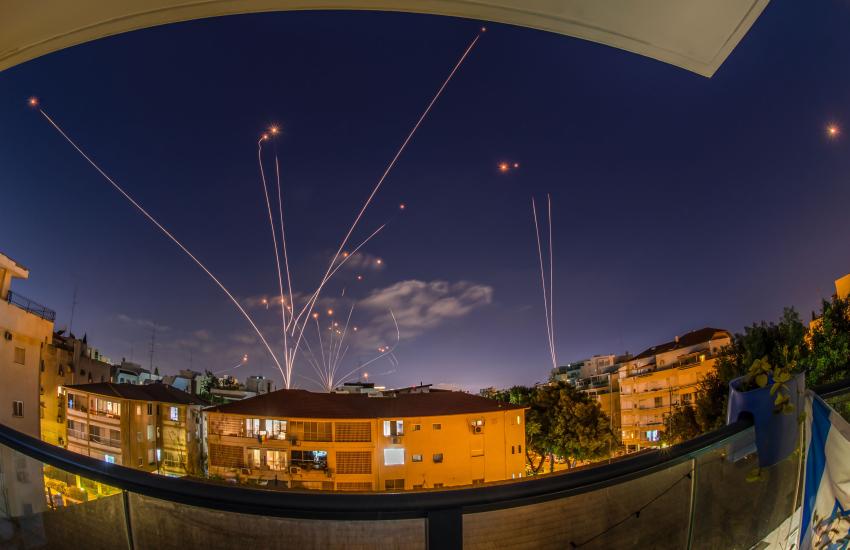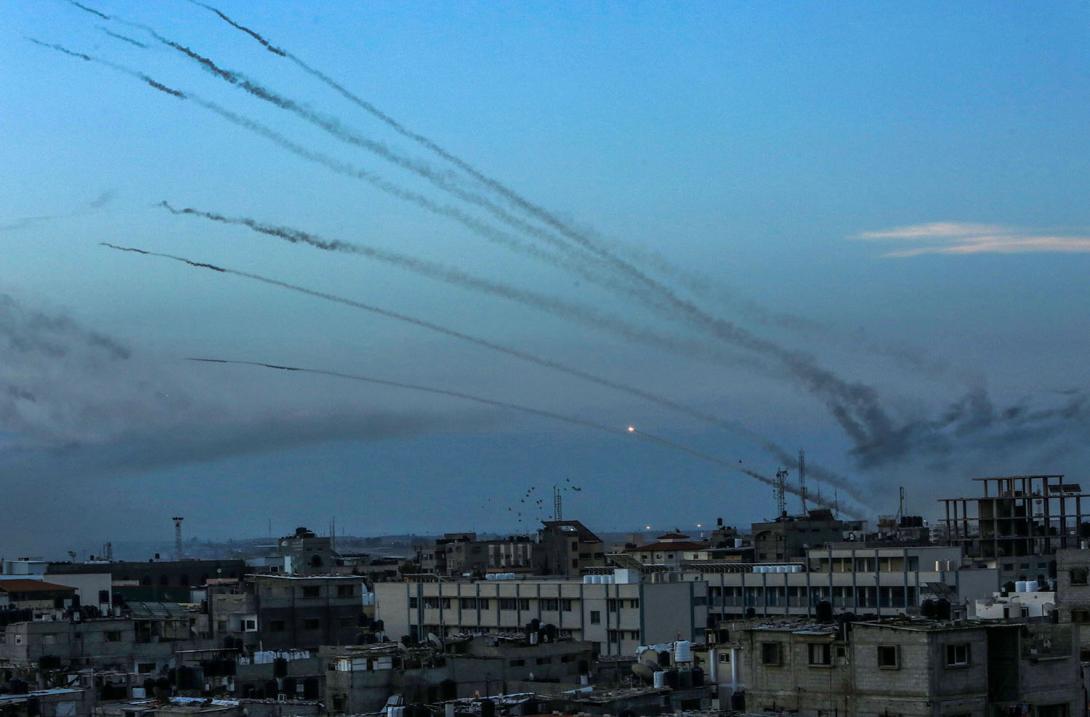Hamas’ UAV Adoption and Tunnel Innovations Challenge IDF in Asymmetrical Warfare
When Hamas terrorists overwhelmed Israeli defenders on October 7, 2023, few in the Israeli Defense Force (IDF) believed the fundamentalists had the ability to inflict such damage. The jihadist group watched the ongoing war in Ukraine and learned how to leverage technologies and techniques to lead asymmetrical warfare on a more powerful force.
But Hamas’ October onslaught was only a point along a timeline that took more than a decade. The evolution of the conflict in Eastern Europe accelerated lessons to those updating their tactics. Among the most relevant ones is the use of unmanned aerial vehicles, or UAVs.
“The biggest trend right now is for both sides to move away from expensive standalone platforms and more towards cheap expendable mass,” said Samuel Bendett, a senior associate nonresident fellow at think tank CSIS—the Center for Strategic and International Studies.
Bendett describes the UAV adoption rate as increasing after Russia’s invasion of Ukraine.
“The capability for inexpensive long-range drone strikes is not new, however. The drone technology for covert actors to cheaply penetrate deep behind enemy lines, avoid electronic and kinetic defenses, and precisely strike military targets has existed since roughly 2012. However, integrating and operationalizing the technology has traditionally required climbing a steep learning curve. This is especially true in a contested battlefield environment,” wrote Mark Jacobsen, nonresident senior fellow at the Atlantic Council, a Washington, D.C.,-based think tank.
Jacobsen identified three trends in Ukrainian drone innovation:
- Spreading technical knowledge
- Specialized technology development
- Creation of an ecosystem to support technology development
Hamas capitalized on some of these elements prior to launching its attack on Israeli civilians.
“Hamas has been very, very adaptable, very pragmatic,” said Tahani Mustafa, a Jordan-based senior Palestine analyst at the International Crisis Group.
The three attributes of an effective defense innovator seem to be present in Gaza. “Education is a huge priority in the occupied territories and for good reason,” said Mustafa.
At a recent Doha Forum meeting, which involved Hamas officials, it was revealed that much of the physical training in preparation for the October 7 attacks took place in Lebanon, Syria and Egypt. The cyber training, however, took place in Tunisia, Mustafa told SIGNAL Media.
This enables the spread of technical knowledge and the support of innovation. But the specialized development can be seen in the seemingly primitive work of the terror group.
Most warfighters take refuge underground. Hamas terrorists have taken this to a whole new level.
There may be more than 300 miles of tunnels under Gaza.
“We’re hearing things like Israel trying to flood the tunnels with seawater; Hamas have made it very clear that they already have countermeasures in place,” Mustafa stated.
“Stretches of the tunnels are concrete reinforced, equipped with electricity and communications, have stores of food and water, and are large enough to host small gatherings of people, and even permit vehicles to travel through them. Some Israeli military experts say that in a few places, tunnel structures could run as deep as 200 feet,” wrote Mark Green, president of the Wilson Center, a think tank.
“They’ve had very specialized engineers in order to set up that tunnel system underground,” said Mustafa and explained the difficulties for the IDF in fighting and disabling such sophisticated infrastructure.
While construction may not demand high technology levels, it illustrates the learning capabilities and determination of the actor. When the terrorists focus on one capability, they somehow find a way to acquire it.
“A lot of [technology] is largely homegrown, so they have invested a lot in terms of having engineers and people specialized in manufacturing certain types of weaponry,” Mustafa said.
Previous cyber operations from Hamas showed the terrorists’ creativity, employing simple yet effective tools, according to Mustafa.
In mid-2018, the IDF uncovered an attempt by this group to seduce soldiers into downloading spyware. With the creation of fake social media profiles, they attracted members of the military and lured them into installing dating or sports apps that were spyware.
The IDF said at the time that only 100 soldiers had downloaded malware and that there had been no breach.
“The victims received a link to download the malicious application from a Hamas operator disguising themselves as an attractive woman. Once the application is installed and executed, it shows an error message stating that the device is not supported, and the app will uninstall itself—which actually does not happen, and the app only hides its icon,” according to a report by Check Point Research, a cyber threat intelligence company.
Still, the IDF seemed oblivious to Hamas’ increasing levels of sophistication.
As Israel employed more drones, the terrorists adapted. “What they do is they will shoot them down and then reprogram them, and then send them back in the sky, and then Israel will think that that’s one of their own drones, and they’re using that to then spy on Israeli soldiers, locate their coordinates and set up ambushes,” Mustafa told SIGNAL Media in an interview.
The Western communities, along with Israel, bet on Hamas soon running out of supplies, Mustafa mentioned. Hamas could, however, adopt the same strategy the Palestine Liberation Army adopted in South Lebanon.
“In 72 hours, Islamic Jihad managed to shoot down something like a hundred armored vehicles,” she stated. “Obviously these aren’t reports the IDF wants coming out … you’re talking about huge sums of money here.”



Some of the tactics are being recorded and displayed on various Arabic media channels, Mustafa said. While the drone war in Eastern Europe sees a wide variety of tactics, repurposing technologies for intelligence gathering has been an activity that went well beyond installing malware in Israeli soldiers’ phones.
And part of the intelligence and reconnaissance is done with “very cheap surveillance cameras, but you would put them on every house, every shop, every building and each faction has their own surveillance cameras,” Mustafa said. This echoes a similar tactic the Ukrainians employ.
Developers reengineered apps to warn of Russian missile strikes as well as to report on the invader’s position. Ukrainians can post photos and locations of enemy forces on Diia, a government app that turns every smartphone into an intelligence-gathering device.
As Hamas expands technology capabilities, Israel seems to be looking at other issues.
“It seems that every 50 years Israel needs a lesson in humility,” said Mookie Tenembaum, an international analyst and former prosecutor in Jerusalem for the Israeli judiciary. He referenced the Yom Kippur War, initiated by Egypt and Syria on October 6, 1973, on the Jewish holy day of Yom Kippur.
Tenembaum stressed the surprise factor and how ill-prepared the IDF was for this new round of fighting with Hamas.
“Hamas disconcerted the Israeli army using strategies that worked well for them, that also worked well in the case of Ukraine,” Tenembaum explained. What Hamas and Russia did not calculate were the consequences of their actions. While they produced effective multi-pronged initial actions, in an initial phase, their efficiency dropped once resistance was organized—especially in political terms.
Prior to the Russian invasion, Ukraine was divided, and pro-Russia political parties garnered electoral support. Israel, until October 7, was gripped in political infighting.
According to Tenembaum, both countries reacted with unity under duress, and the new military balance will require further fostering of innovation ecosystems.





Comments